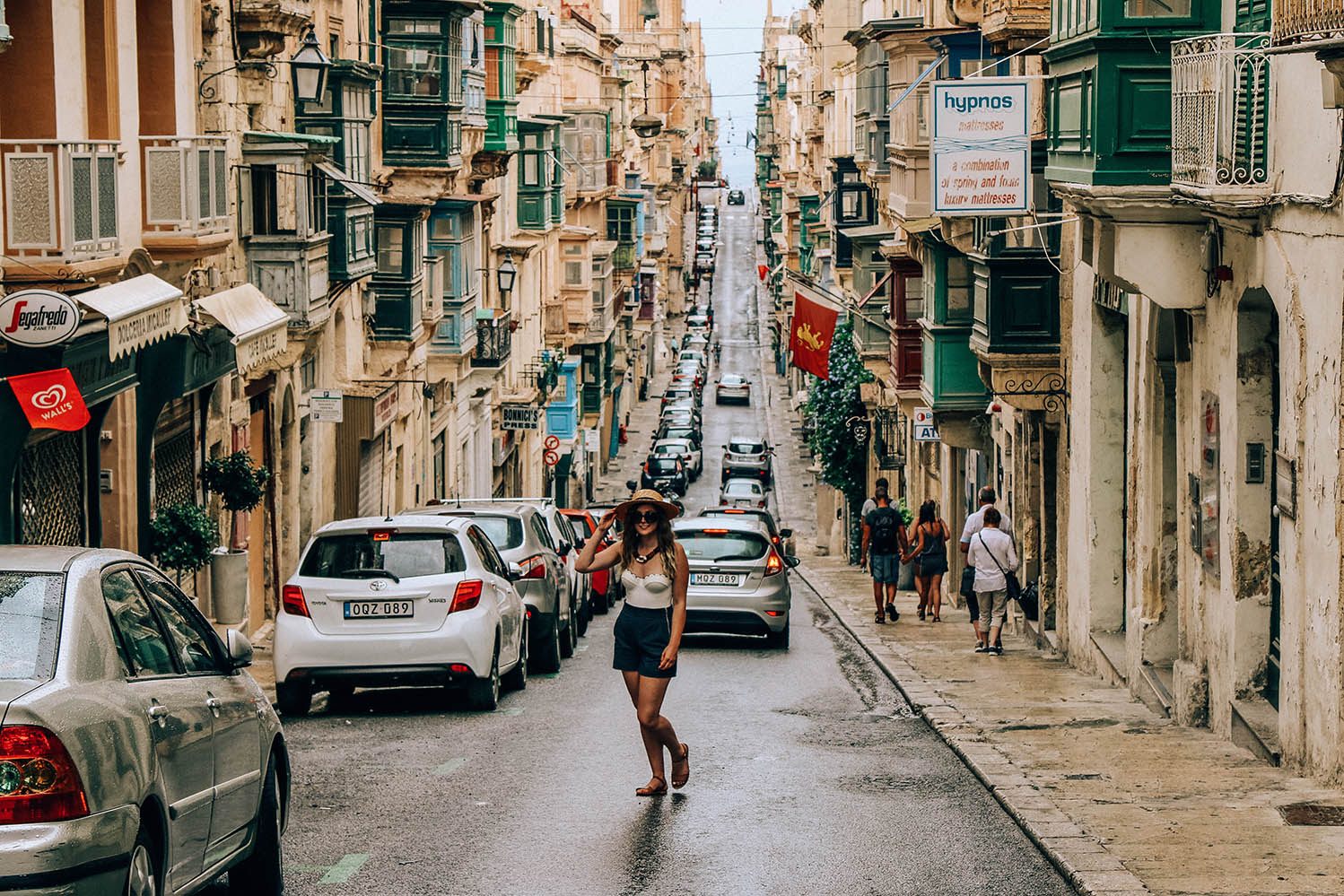What to do in Valletta, was the thought wandering through my mind as soon as I left the Sliema Roman Baths. You see, I had a day of Maltese explorations planned, but no real plan within it—just the way I like it. The only thing I did know is that my next stop was the walled city, and so as I walked along the seafront towards the ferry which crosses between Sliema and Valletta, I pondered what to do in Valletta.
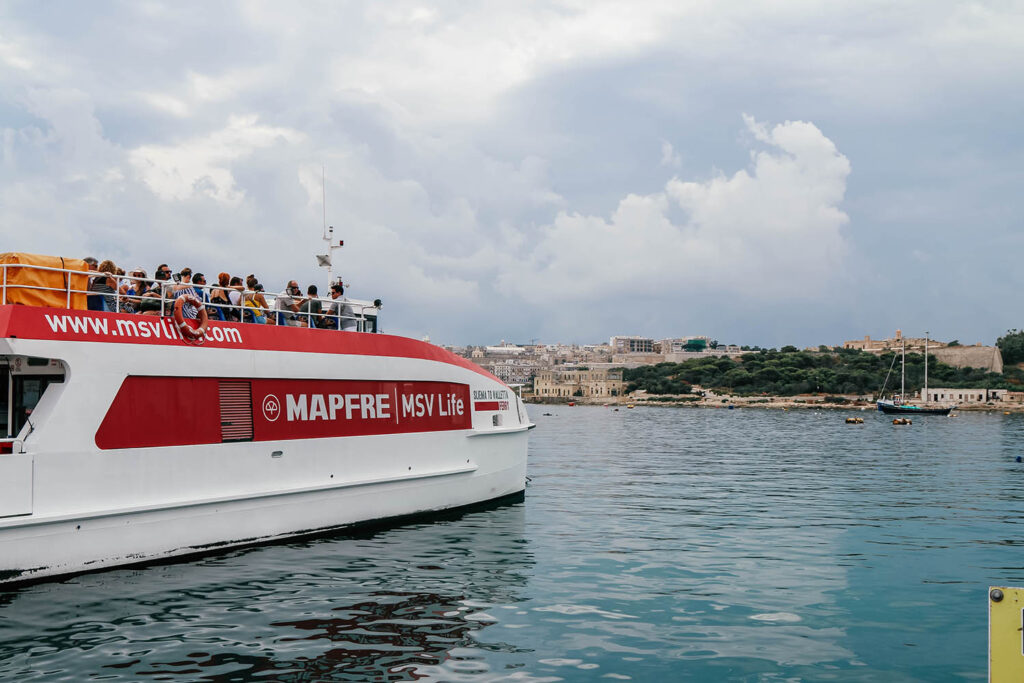
For those who like walking, there’s a 3 hour walking tour available (£18pp), for those who like to explore through their tastebuds, there’s a street food tour (£46pp) and if you want something completely different, you can even take a Segway around the city! (£55pp). But I was venturing around with no plan, just going with the flow to see where I ended up.
I’ve mentioned this previously, but Malta was a place I’d first heard of through stories that my mum told. She’d been there when she was 13 and had instantly fallen in love with the place, describing it as a country with beautiful architecture, warm weather and friendly locals. And as the ferry crossed the water and approached the city, with that warm European breeze blowing (my hair directly into my eyeballs), it was hard to disagree.
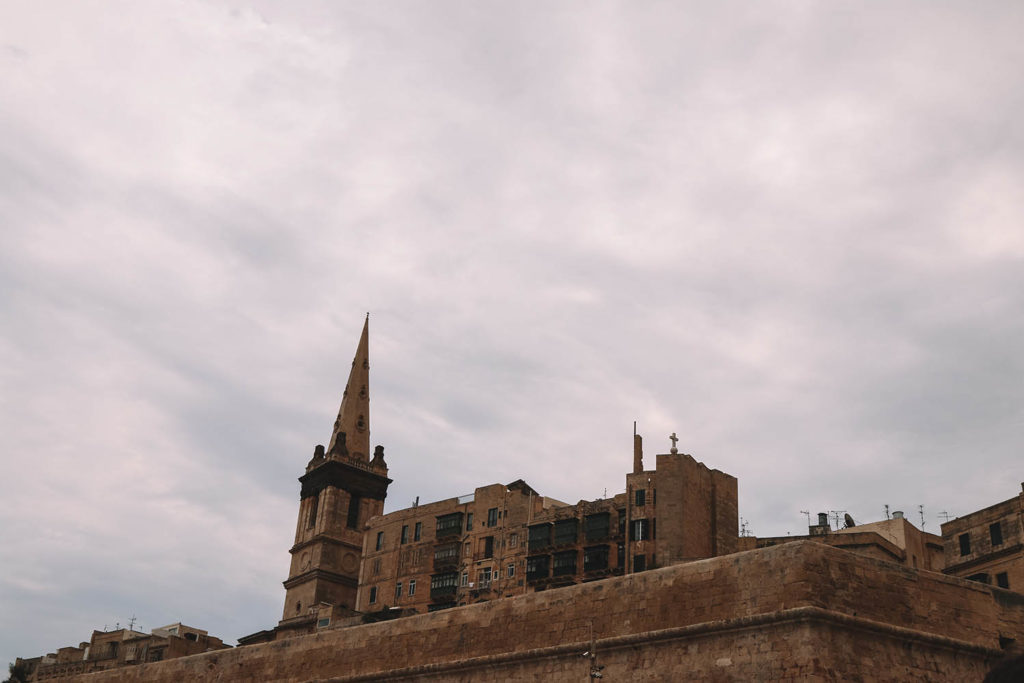
The city of Valletta isn’t only the capital of Malta, but a World Heritage city as declared by UNESCO for the stunning features and extraordinary city. You see, whilst Valletta is one of the smallest cities in Europe, it’s also one of the most breathtakingly picturesque, with the Grand Harbour flowing between two towering bastions.
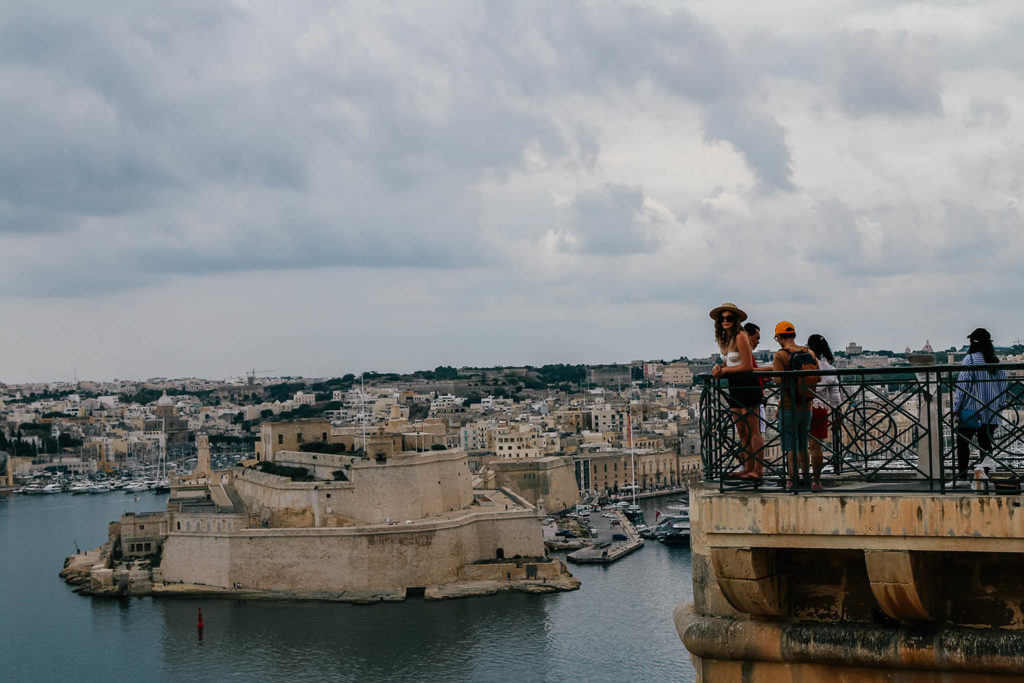
The most immediately noticeable feature of Valletta is the large fortified walls. You see, way back when in the Great Siege, the Knights of St John almost lost the islands to the Ottoman Turks—and afterwards, as they sat down for a cuppa**, they thought to themselves “Whoa mate, that was close! We’re not going through that again!”** and built themselves some fancy fortified walls to protect the city from those looking to conquer it.
**probably
The Knights of St John were aided by European military engineers (the most respected in the 16th-century) to develop and build those fancy walls and by 1570 Valletta was a state-of-the-art fortified city. Inspired by the late Renaissance, the city was created to be a holistic design, with a uniformed grid plan laying within the fortified walls. And because this plan was so well constructed, the Knights of St John left behind an array of opulence and incredible architecture which, together with its impressive protection, can still be viewed today.
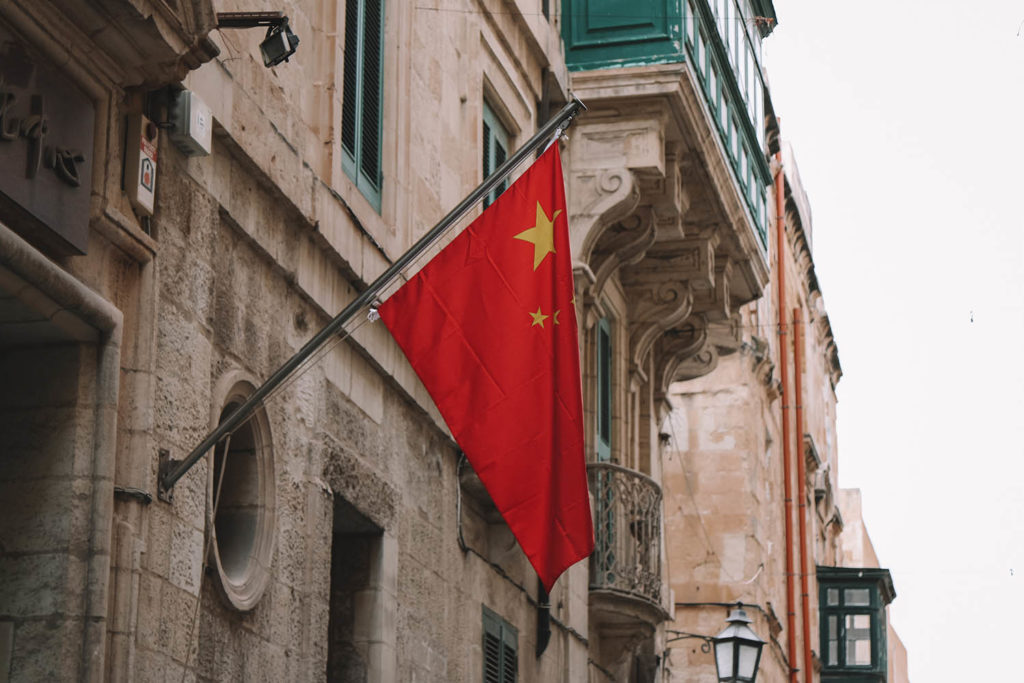
As the Sliema to Valletta ferry approached the walled city, I saw the dome of the Basilica of the Lady Mount Carmel poking out above the rooftops. It stood out like a call to prayer, only instead of praying it was calling me to explore.
The city of Valletta is sandwiched between two harbours and built on a hilltop, which means that whilst the city is only 1km long by 600m wide, the beginning of my quest to explore was all uphill—making it feel much, much larger.
I have to say, I wasn’t exactly sure what to do in Valletta, I only knew that I wanted to explore it, and so I took it slow, wandering through nooks, crannies and alleyways in the uphill battle which shone a light on just how unfit I had gotten.
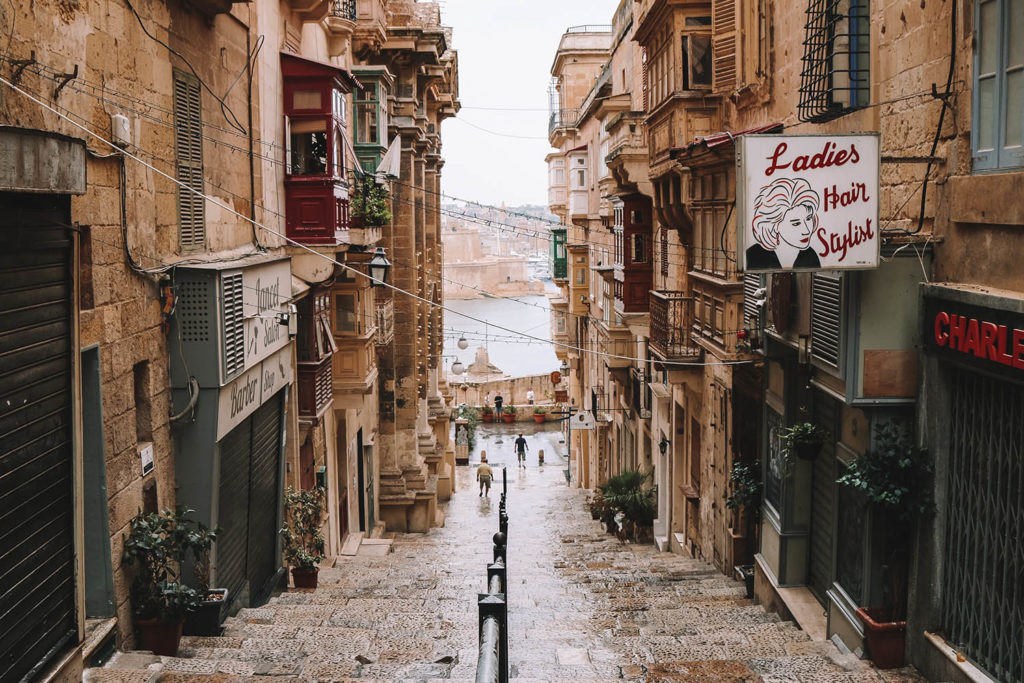
The best part of exploring this way was seeing many of the city’s original features—such as the stone steps on the side of the roads. The steps were made from the hardest stone on the island, and were built to make it easier for the knights to ascend in their armour. Because of the material choice, they have stood the test of time. Which is pretty cool considering the footfall they face each year. All I know is it was a struggle hurdling my own bodyweight uphill in 30°c heat, so I can’t even begin to imagine how the knights felt lugging their own bodyweight plus armour and chainmail around.
My first step when deciding what to do in Valletta was to make my way to the Saluting Battery, located in the Upper Barrakka Gardens. Because for the past 500 years the Saluting Battery has been used as a timekeeping device of sorts. Only, instead of a clock, the Saluting Battery fires five canons (at noon and 4 pm) to mark the time of day.
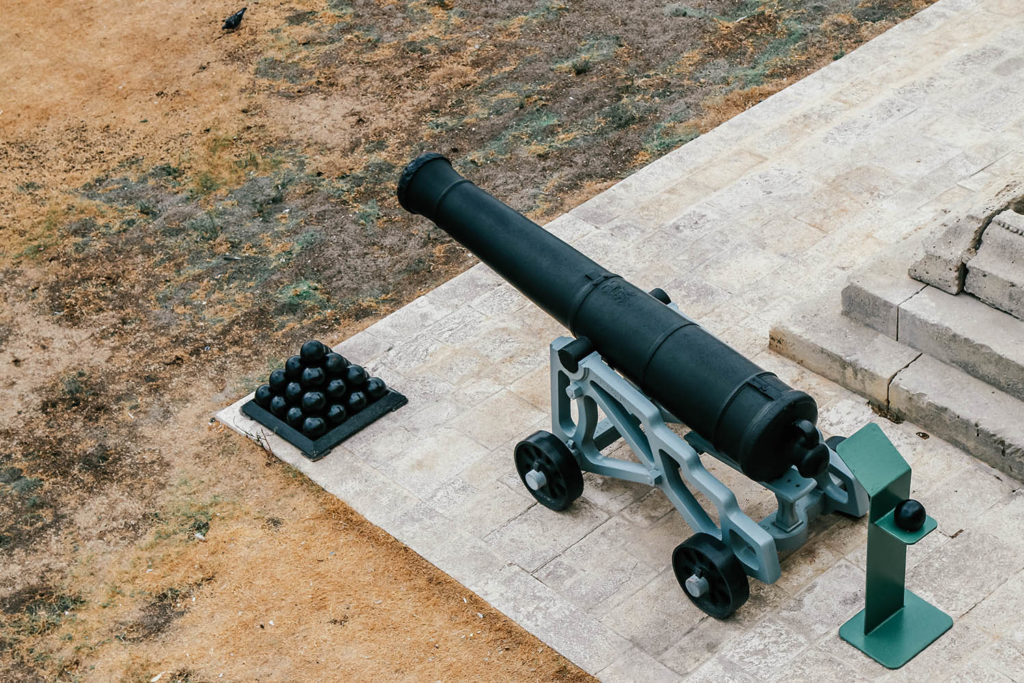
Apparently, it’s quite the thing to see—and I say apparently because after getting there early and waiting in the rain, I discovered that they don’t fire the cannons on Sundays… The day I was there, so I didn’t actually get to see it.
Sod’s law!
But if you go there on a day that isn’t Sunday, you’ll see officials wearing military uniforms and firing cannons. A tradition which has continued over the years as a way to commemorate the naval forces which once protected Valletta.
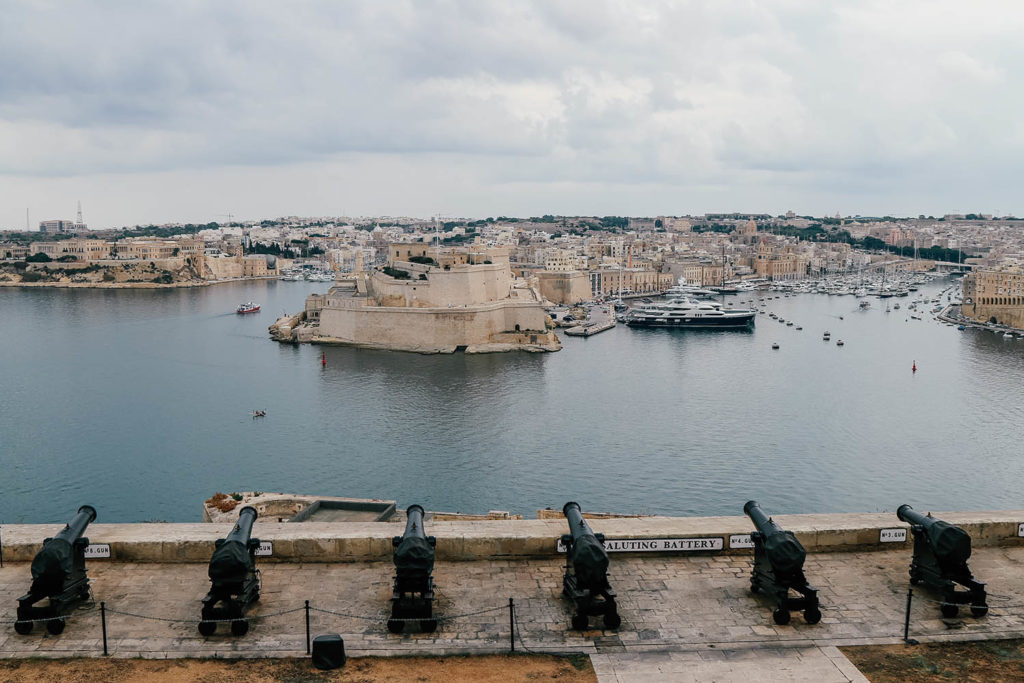
The Saluting Battery is situated in the Upper Barrakka Gardens, a beautiful park situated along Valletta’s coastline and a great place to take a break. The views are incredible and stretch out across Birgu and the numerous fancy yachts which are docked there. I’m not kidding when I say fancy, by the way, two of them had helicopter pads…
There are actually two parts to the Barrakka Gardens, the Upper Gardens (where the Saluting Battery is) and the Lower Gardens—which are located a ten-minute walk away.
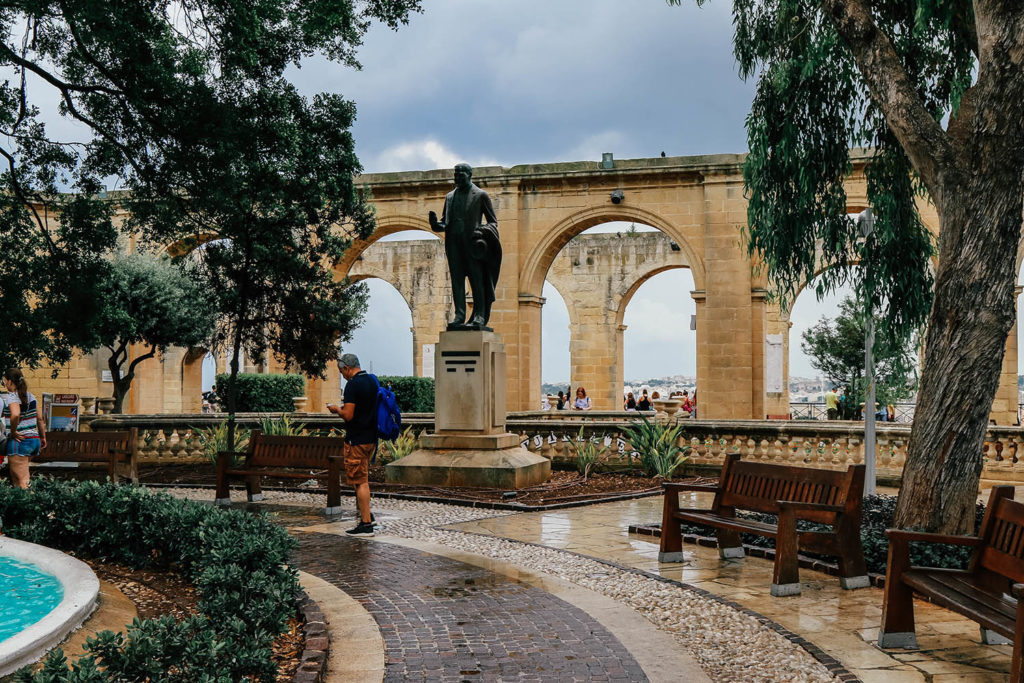
The weather, on the day I was wandering around wondering what to do in Valletta, was not great. The day had started beautifully sunny and warm, but whilst waiting for the cannons it turned grey, grizzly and wet. Armed with nothing but the clothes I was wearing, I got drenched, and as exploring is thirsty work, I decided to stop for a snack break whilst I dried off.
My snack shop of choice? Amorino, a gelato shop which serves their products like this:

With designs so pretty, it’s officially become the only way I want to receive flowers from now on.
And the flavours? I hear nobody ask…
Strawberry, salted caramel and vanilla gelato. A classic combination, for no other reason than I love all three flavours.
Sufficiently hyped up on sugar, I continued to explore Valletta, but rather than taking you on a chronological play-by-play of how I did it, I’ll set out the key points below. So, if you find yourselves with an upcoming trip to Malta and you’re wondering what to do in Valletta, you’ll be all set!
What To Do In Valletta
The Valletta peninsula has remained largely unchanged throughout the years, and you can still see the influences of previous cultures and nationalities running through the city—including post and phone boxes from its time as a British colony. Because of this, it makes for a wonderful place to explore slowly on foot. But if you’re struggling for ideas on what to do in Valletta, here are a few ideas to get you started.
Take A Walking Tour
Whether you want to book onto a paid tour, or roam the streets aimlessly as I did, is completely up to you. But roaming the streets of Valletta in Malta is always a good place to start your explorations. Not just to get a feel for the city’s layout, but because it helps you to get a feel for the city’s history. From the ancient stone steps to unique Maltese architecture, Valletta is a feast for the eyes. However, it’s not an easy feat for the feet, so be sure to wear comfy shoes!
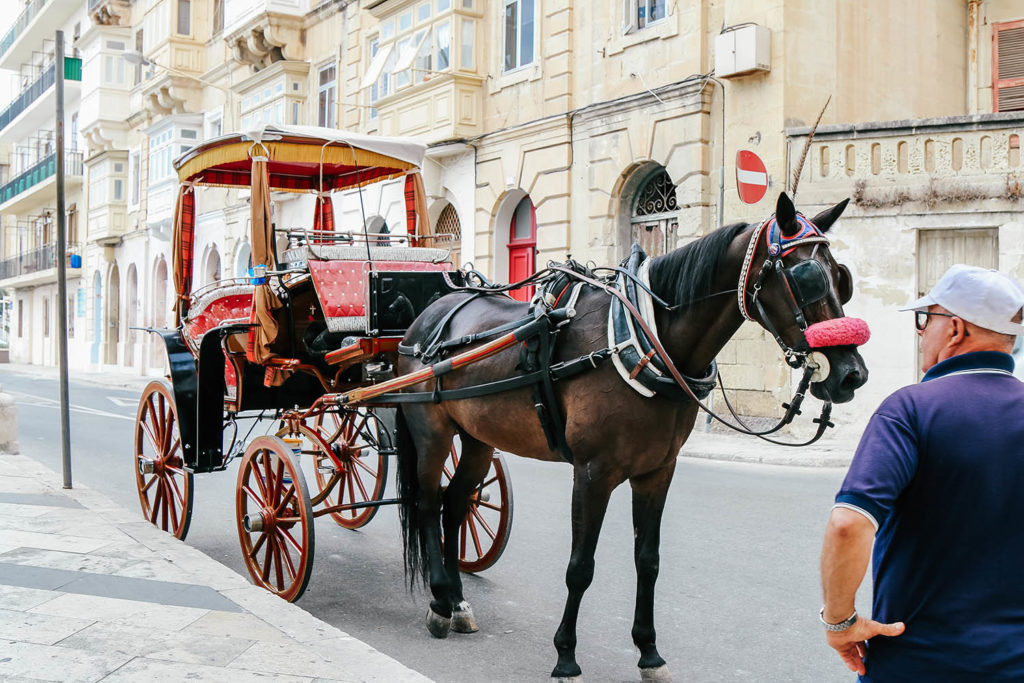
Visit St Johns Co-Cathedral
Taking 6-years to build, St John’s Co-Cathedral has been standing since 1571 and has firmly established itself on many a “must-see” list for Malta. But I’ll be honest—I was not one of the people to see it. You see, operating with limited time and a desire to get to the next location (you’ll see why in my next post!) meant that I had to make a sacrifice, and unfortunately, St John’s Co-Cathedral was it. But if you’re looking to visit, the internet tells me that you’ll find a myriad of colours, textures and materials within. From vaulted ceilings to hand-carved stone walls gilded with 24c gold, it’s a place of opulence which showcases the wealth of those oh-so-talented wall-planning knights!
Hit The Shops
Whether you’re looking to peruse the shelves of antique toy shops, or sample produce from the local markets. Valletta has plenty of places for you to spend your hard-earned cash. The main street is Republic Street, where you’ll find restaurants, cafes and Amorino—the place which made my beloved flower gelato! But outside of this, there’s also Merchant Street, which boasts various craftsmen stores, including jewellers.
Check Out The Museums
Whether you’re looking to check out the underground crypt from 3,000 BC in the National Museum of Archaeology, or wanting to visit the National War Museum at Fort St Elmo to learn about Malta’s journey from being ruled by the Romans, Spanish, French and British to gaining independence in 1964—Valletta has plenty of museums for you to indulge your inner history-lover with.
Gawk At The Gallarijas
Why yes, a gallarija is essentially just a box balcony. But these box balconies have become a prominent part of Maltese history due to their unique and beautiful design. Why these gorgeous little box balconies were first introduced is still a mystery, with much of the information online surrounding gallariji incredibly conflicting. But regardless of whether they were created for extra room, or to separate social classes, they’ve become an identifiable part of Malta’s cityscape, and as such the Maltese government has noted their importance, by putting protective measures into legislation to protect and preserve them.
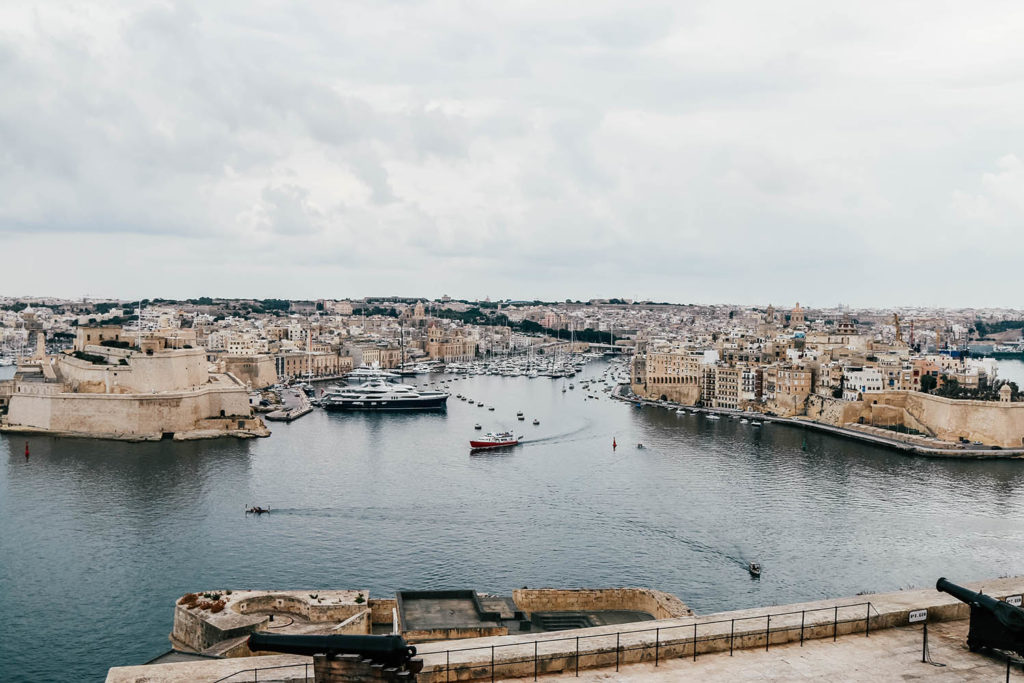
Witness The Waterfront
The centre of the city of Valletta is designed in a grid formation with 12 parallel streets, meaning there are numerous places to view the harbour from. But Valletta’s waterfront shouldn’t be explored from afar, so be sure to take the time to walk along it. Or better yet, hop in a boat and take to the waterways! You can do so on a tour around the harbour, or by catching one of the local ferries across to the Three Cities, because Birgu (Vittoriosa), Senglea (Isla) and Bormla (Cospicua) all offer beautiful vantage points.
